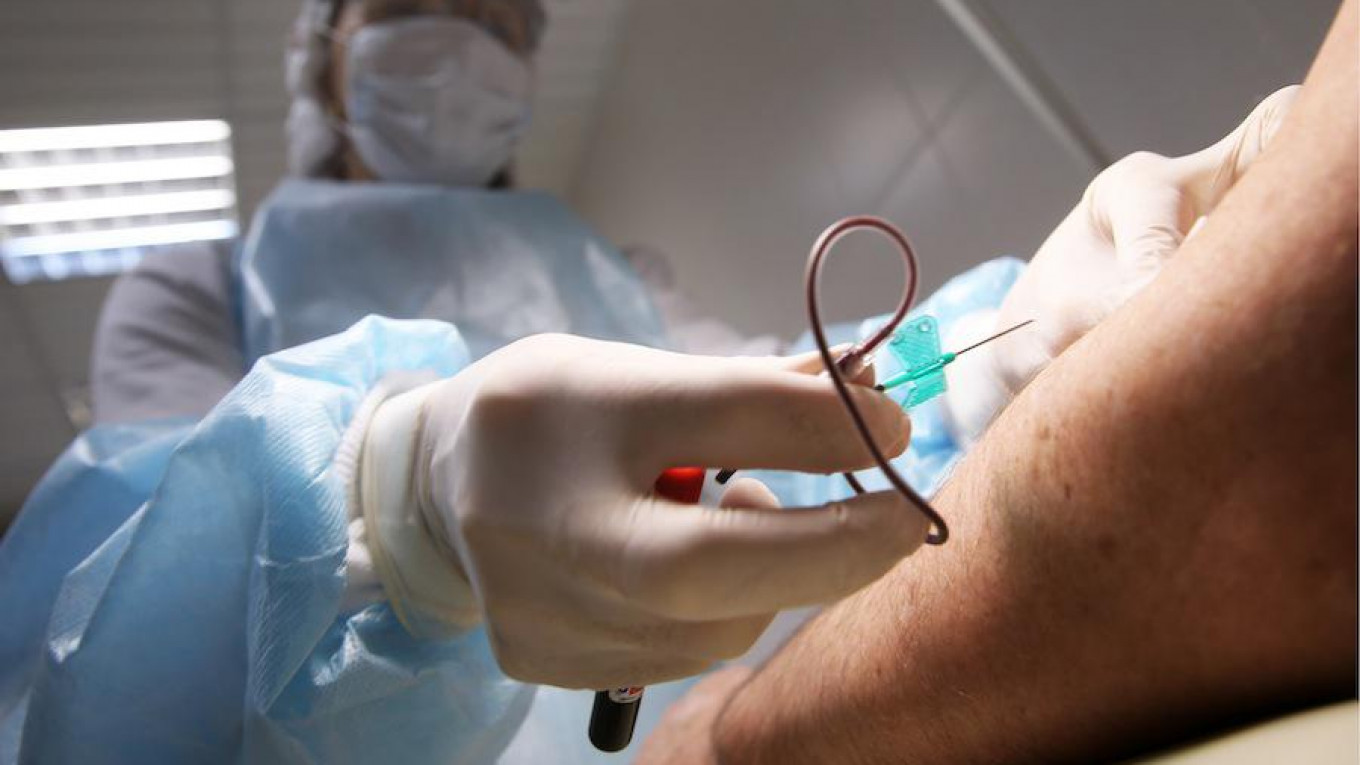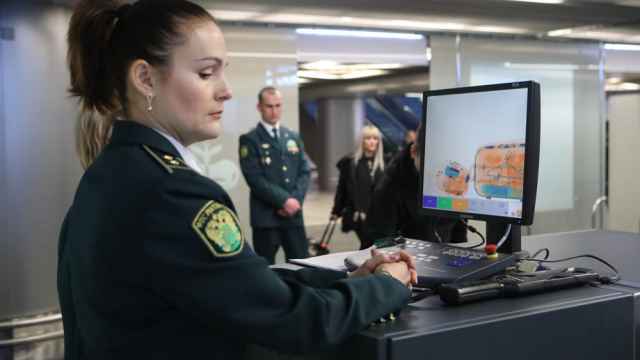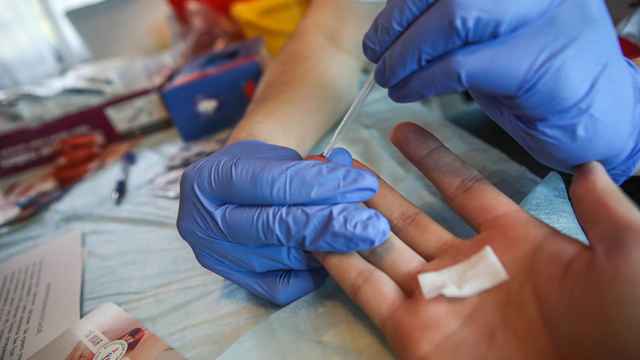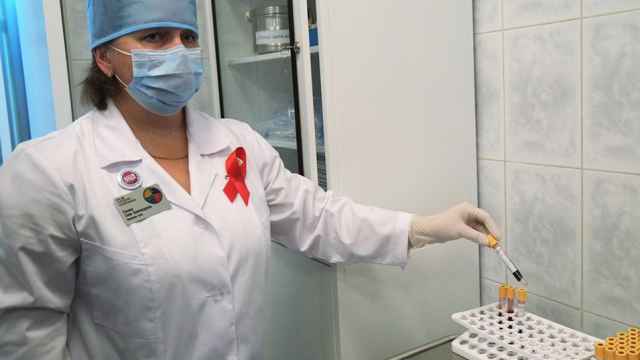You might think that combating a growing epidemic of a deadly and incurable disease would be any country’s top priority — but you would be mistaken when it comes to Russia.
News reports surfaced recently that the country’s Finance Ministry has refused to allocate a four-year rollout of 70 billion rubles ($1.2 billion) to fight the country’s HIV epidemic. HIV, officials explained, would have to wait until the federal budget accesses new sources of revenue.
According to the RBC news website, the Health Ministry had planned to spend 13.2 billion rubles ($222 million) annually on treating patients already diagnosed with HIV. The rest of the money would go toward diagnosing patients and controlling the spread of the disease.
With this funding now slashed, The Moscow Times explains why he decision is bad for Russia and its HIV patients.
Yes, Russia’s HIV Epidemic Is That Bad
According to UNAIDS, Russia has the largest HIV epidemic in the European region and one of the fastest growing in the world.
As of September 2016, there were 854,187 Russians registered living with HIV. The overall number of HIV cases registered since 1985 has exceeded 1 million. If you include undiagnosed cases, the number rises to 1.2-1.4 million, according to Vadim Pokrovsky, head of the Moscow-based Federal Center for Fighting AIDS.
Russia’s HIV growth goes against the experience of the developed world, where the number of new cases has fallen. In 2015, Russian health authorities registered 95,475 new HIV cases. During the first nine months of 2016, another 75,962 HIV cases were diagnosed.
For the first time in decades, even Russian officials seem to be alarmed. In November, Health Minister Veronika Skvortsova described the situation as “critical”. But so far, no equivalent critical measures have been taken to fight the crisis.
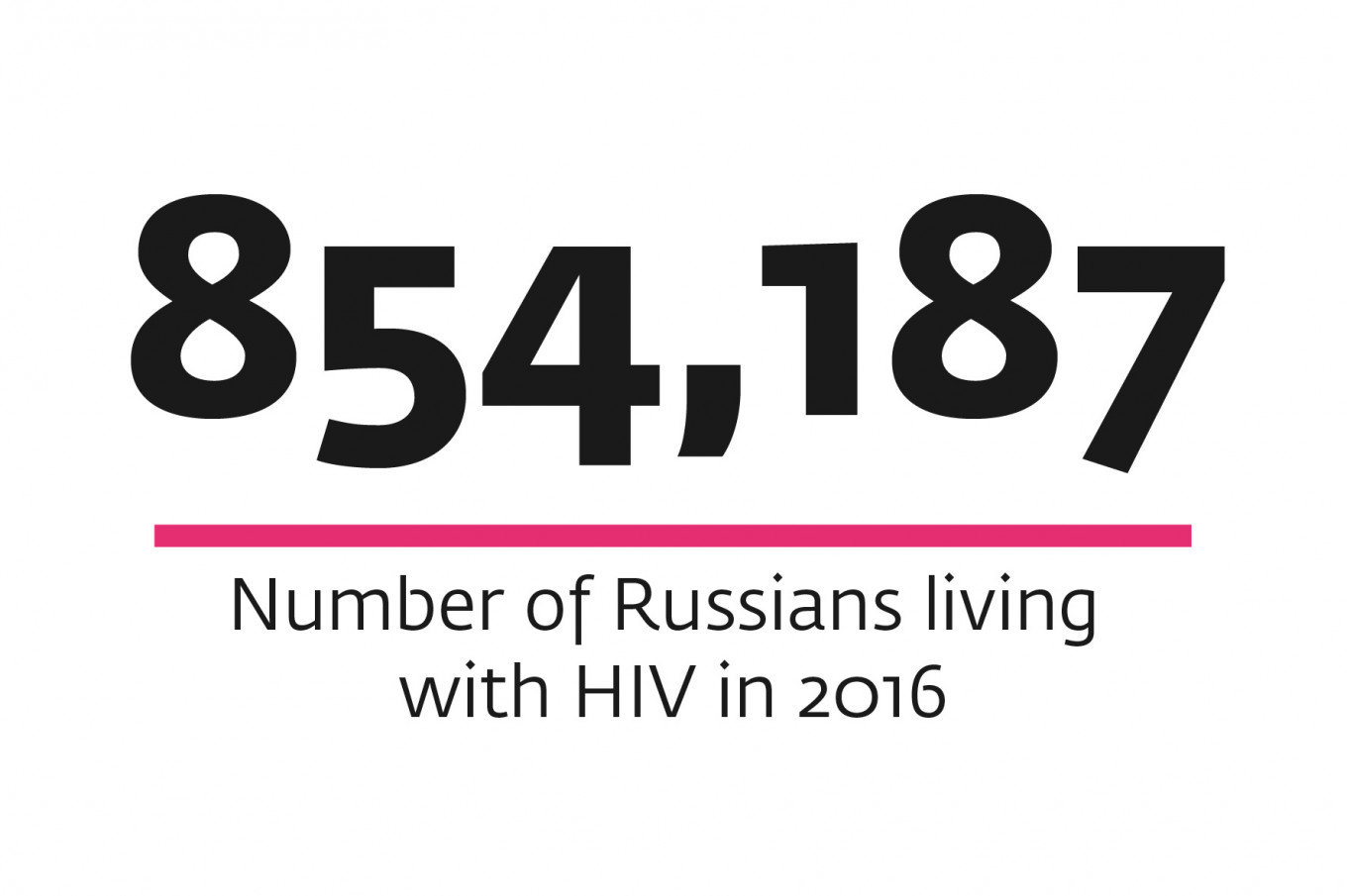
There Are Effective Ways of Fighting HIV
In June 2016, Russia and other UN member states committed to the “90-90-90” plan to combat the infection.
By 2020, participating countries should have diagnosed 90 percent of people with HIV, provided treatment to 90 percent of those diagnosed, and reduced viral loads to undetectable levels in 90 percent of all those being treated.
With undetectable viral loads, the virus is essentially neutered — neither harmful to the carrier’s health nor transmittable to others.
In countries where that goal is reached, AIDS-related mortality drops dramatically. The impact of treatment as prevention means the epidemic becomes manageable, and new cases reduced. HIV patients no longer occupy hospital beds.
If that sounds too good to be true, take a look at Sweden. In September 2016, the Scandinavian country became the first to announce that it had reached the 90-90-90 target. At the end of 2015, 90 percent of HIV cases in Sweden were diagnosed. More than 99 percent of people had been linked to care. Some 95 percent of people taking antiretroviral medications for at least six months had an undetectable viral load.
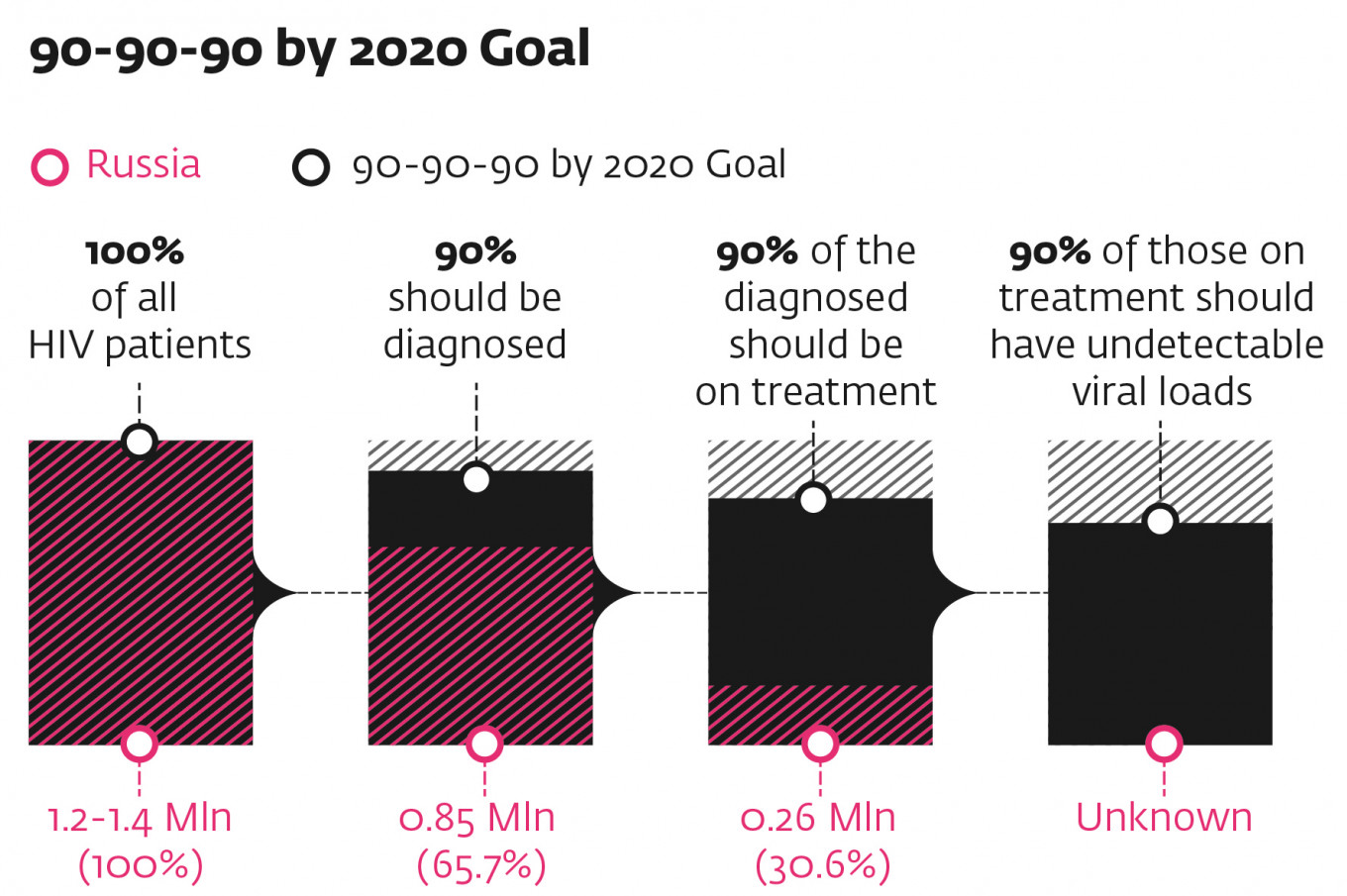
Where Does Russia Stand in Terms of 90-90-90?
One of Russia’s problems is that it doesn’t actually have an official estimate of the number of HIV cases in the country. It’s possible that 854,000 diagnosed patients are 90 percent of all cases, but in this case you would imagine the number of new diagnoses to be fairly low. It isn’t. Russia registers tens of thousands of new cases every year.
Russia is also some way off meeting its target of treating 90 percent of diagnosed infections. If 854,000 people were the 90 percent, 768,000 of them (90 percent) would be receiving treatment. In reality however, only 260,000 people (40 percent) are getting the medication they need.
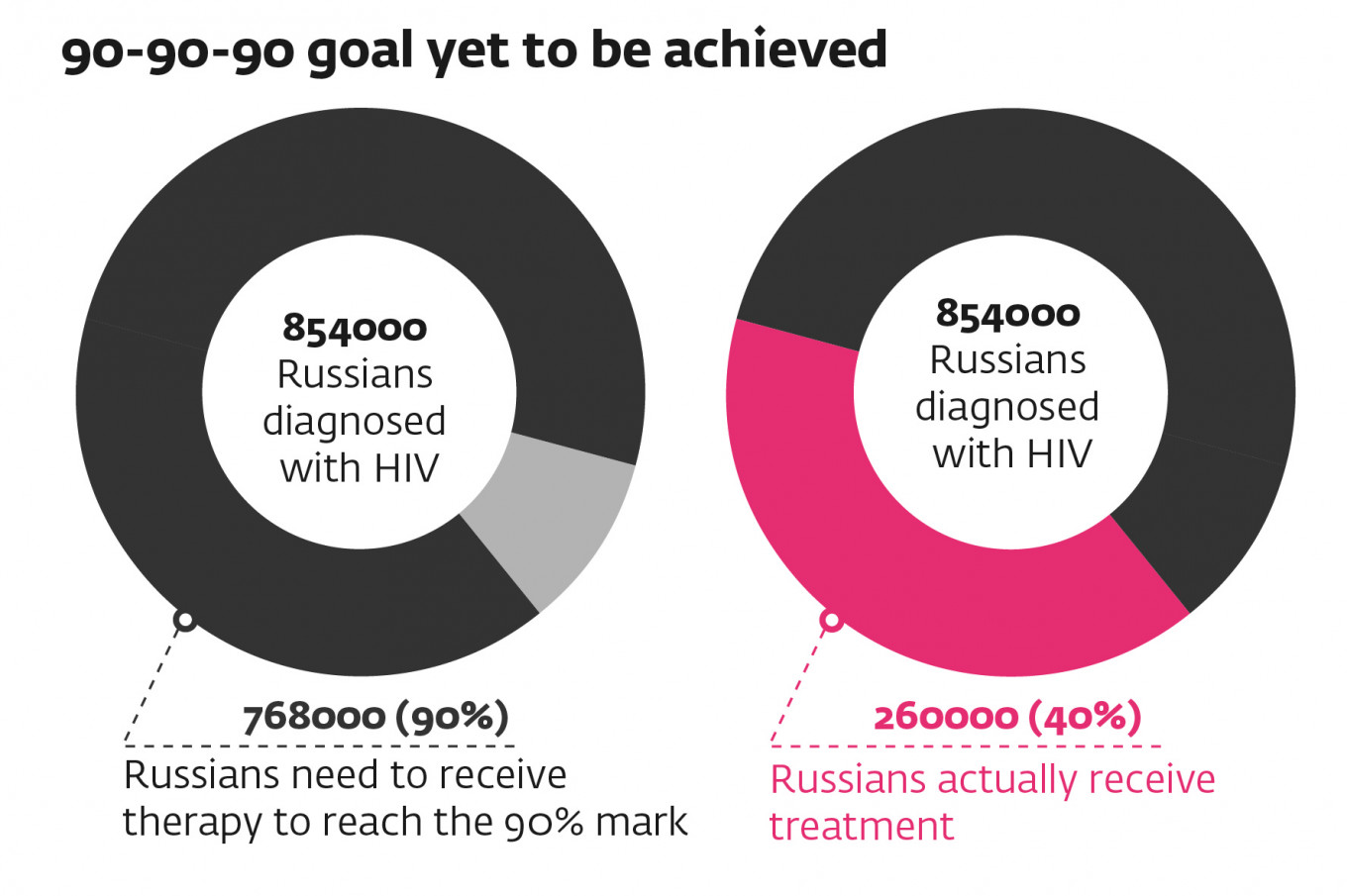
Why Can’t Russia Diagnose and Treat More HIV Patients?
It’s primarily a problem of cash. Diagnosing and treating patients costs money. Russia’s medical infrastructure is underfunded and outdated. The epidemic is growing quicker than Russia’s medical infrastructure. There are just over 100 AIDS centers across the country, but they are operating at capacity and patients often have to spend hours in lines waiting for doctors.
The budget for HIV treatment is subject to constant cuts. This puts undue pressure on HIV patients in Russia, who spend more on medication than almost any other country. According to UNAIDS, Russia has the most expensive first-line drugs among BRICS countries. In South Africa high-quality drugs cost $85 per patient per year, in India $110, in China $200, and in Brazil $400. In Russia the average cost is $1,300 per patient per year.
Russia’s treatment procurement system is also complicated and inefficient, which means there are often shortages. HIV patients polled by The Moscow Times said they have had to wait for medication – which means living without treatment – for up to a month. Russian drugs are also of low quality.
Russia Doesn’t Believe in Prevention Programs
UNAIDS says that 25 percent of national HIV funds should be spent on prevention programs. These include needle exchange programs, drug substitution therapy, condom distribution, free testing and educational activities — all targeted to vulnerable groups, such as intravenous drug users, sex workers, sexually active gay men.
Russia follows few of these recommendations. Drug substitution therapy is illegal in the country, and last week Foreign Minister Sergei Lavrov dismissed it as “replacing one narcotic high for another.” Needle exchange programs and sex education are frowned upon by conservative officials.
Some Russian Regions Lead by Example, However
According to the Health Ministry, the situation is critical in at least ten Russian regions. The Republic of Tatarstan, however, is not one of them, and its HIV prevention work is held up as an example to follow.
According to UNAIDS experts, Tatarstan authorities keep programs under the radar, but they include needle exchange, condom provision, HIV prevention activities in school and outreach to sex workers. Tatarstan also has the highest number of people on treatment – 62 percent of all diagnosed HIV patients.
In May 2016, authorities there organized a marathon to raise awareness of HIV. It was the first sporting event in Russia linked to the disease. Some 100 people openly living with HIV took part alongside Tatarstan’s president, Rustam Minnikhanov. He ran 3 km and afterwards got tested for HIV in the UNAIDS pavilion, inspiring other regional officials to do the same.
A Message from The Moscow Times:
Dear readers,
We are facing unprecedented challenges. Russia's Prosecutor General's Office has designated The Moscow Times as an "undesirable" organization, criminalizing our work and putting our staff at risk of prosecution. This follows our earlier unjust labeling as a "foreign agent."
These actions are direct attempts to silence independent journalism in Russia. The authorities claim our work "discredits the decisions of the Russian leadership." We see things differently: we strive to provide accurate, unbiased reporting on Russia.
We, the journalists of The Moscow Times, refuse to be silenced. But to continue our work, we need your help.
Your support, no matter how small, makes a world of difference. If you can, please support us monthly starting from just $2. It's quick to set up, and every contribution makes a significant impact.
By supporting The Moscow Times, you're defending open, independent journalism in the face of repression. Thank you for standing with us.
Remind me later.


